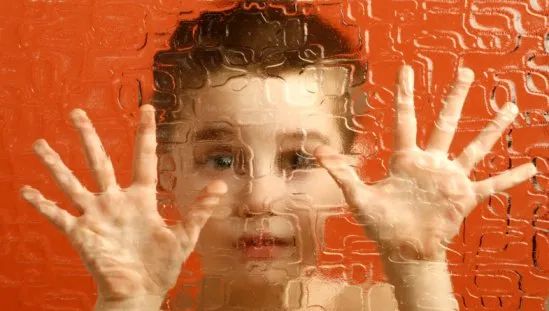
You may find it hard to believe that upon hearing, “We’re going to Disney World!” some children react with the immediate, kneejerk reply, “Oh, NO!” Then again, if your child is on the autism spectrum, you might not find it surprising at all. Autistic children are prone to experiencing extreme anxiety and fear over changes in their routine. Being told that they are going to pack up their favorite (and probably meticulously organized) belongings, miss school, fly in an airplane, and sleep somewhere other than home-sweet-home, is just about enough to send them over the edge. Fortunately, there are ways to help these kids adjust so that they too can relax and experience the magic. Here are 5 great ways to help a child with Autism Spectrum Disorder cope with travel (or any change in routine.)
#1 Familiarize

With autistic kids, the unknown is scary, so the best way to alleviate tantrum-causing fear is to familiarize, familiarize, familiarize. One idea is to go on-line and find photos, maps and any other visual prompts available. Make sure to print them so that the child can actually hold and manipulate the pictures rather than just briefly viewing them on the computer screen. Many hotels have galleries of pictures showing the rooms, lobby, etc. Google maps will not only provide images of the routes you will be taking, but they also have “street view” photos of just about everywhere. Photos of Disney World and even YouTube videos are easy to find, and they are invaluable tools for familiarization.
#2 Protect the Ears
If your autistic child has hyper-sensory issues, earplugs can help in several ways. Children can be sensitive to both the noise and cabin pressure changes on airplanes. You could use traditional foam earplugs or try a product called “Earplanes,” which come in both adult and children’s sizes. They are affordable, reusable, and eliminate ear discomfort very effectively. You can find them in most pharmacies, convenience stores, and airport gift shops.
Another use for earplugs is in the parks themselves. Disney world is (purposely) a sensory overload, even for people without sensory issues. Taking occasional breaks from all the noise can help your little ones recharge their inner batteries.
#3 Appeal to the Obsessive-Compulsive Side
Autistic children usually exhibit obsessive-compulsive behaviors such as ritualistic organization and repetitive actions. For the child, these behaviors are a source of comfort. By letting them pack and unpack their own travel bags well in advance, you can reduce anxiety and allow them to feel organized and in control.

Tactile sensitivities are also sources of unease for the autistic child. During your packing and repacking process, help your child select clothing that will not be itchy, tight, hot, etc.
#4 Let the Child Have Some Control
Let your autistic child feel in control by planning some of the day’s activities. Perhaps he or she could pick which feature to visit first thing in the morning and first thing after lunch. Alternatively, he could choose where to eat one meal per day. Whatever you decide, you will probably have to agree to these “terms” in advance so that the child can have a sense of routine.
#5 Don’t Overdo It!
You are not going to be able to see and do everything...period. Resign yourself to this and save yourself and your family a lot of grief. Remember, this is supposed to be fun. Yes, I know you’ve forked out a ton of cash for this vacation, but pushing too hard is not the way to get your money’s worth. In fact, it could just make the whole dream experience into more of a nightmare.
Take your time and let the children set the pace, and remember to have fun!
“The adult has a mission to fulfill which has been so complicated and intensified that he finds it ever harder to suspend it as he must do if he is to follow the child, adapting himself to the child’s rhythm....” ~ Maria Montessori
Would You Like to Learn More about autism and Montessori? Whether as a parent or teacher, many of us benefit enormously by a better understanding of our spectrum children. Here is a great place to start, follow this link to Age of Montessori’s Professional Development Webinar entitled: What You Need to Know about Rising Rates of Autism and Dyslexia. Learn from Master Teacher Mary Ellen Maunz as she presents an in-depth view of these problems and explains how the brain can heal itself.
What You Need to Know about Rising Rates of Autism and Dyslexia

Description: Twenty to thirty percent of our children struggle with learning to read and one out of every 50 may be afflicted with Autism. Both are neurological wiring problems with multiple causes. These troubling statistics are compelling reasons to learn how to recognize these problems and what we can do about them. Master Teacher Mary Ellen Maunz will present an in-depth view of these problems and how the brain can heal itself.
More articles from Age of Montessori on autism

























